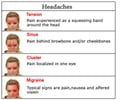Chronic migraine sufferers have decreased neuronal flexibility. However, blocking HDAC6 allows neurons to restore the flexibility. which helps the brain to reset to its pre-chronic migraine state.
- People suffering from migraine have disruptions in their neuronal flexibility
- About 14% of the world population is suffering from migraine
- The new migraine therapy helps restore microtubule or the neuronal plasticity
Pradhan, whose research focus is on the neurobiology of pain and headache, explained that the dynamic process of routing and rerouting connections among nerve cells, called neural plasticity, is critical to both the causes and cures for disorders of the central nervous system such as depression, chronic pain, and addiction.
The structure of the cell is maintained by its cytoskeleton which is made up of the protein, tubulin. Tubulin is in a constant state of flux, waxing and waning to change the size and shape of the cell. This dynamic property of the cell allows the nervous system to change in response to its environment.
Tubulin is modified in the body through a chemical process called acetylation. When tubulin is acetylated it encourages flexible, stable cytoskeleton; while tubulin deacetylation - induced by histone deacetylase 6, or HDAC6, promotes cytoskeletal instability.
Studies in mice models show that decreased neuronal complexity may be a feature, or mechanism, of chronic migraine, Pradhan said. When HDAC6 is inhibited, tubulin acetylation and cytoskeletal flexibility is restored. Additionally, HDAC6 reversed the cellular correlates of migraine and relieved migraine-associated pain, according to the study.
Pradhan said this research reveals a way to possibly reset the brain toward its pre-chronic migraine state.
Once out of the cycle of decreased neuronal complexity, the brain may become more responsive to pain management therapies, Pradhan said. HDAC6 inhibitors are currently in development for cancer, and HDCA6 as a target has been identified for other types of pain.
"It opens up the possibility of something we should be looking at on a broader scale," she said. "Are these changes maybe a hallmark of all sorts of chronic pain states?"
Migraine is a common brain disorder that is estimated to affect 14% of the world population. Current U.S. cost estimates for migraine are as high as $40 billion annually. One particularly debilitating subset of migraine patients are those with chronic migraine, defined as having more than 15 headache days a month.
Migraine therapies are often only partially effective or poorly tolerated, creating a need for more diverse drug therapies.
Source-Eurekalert
















